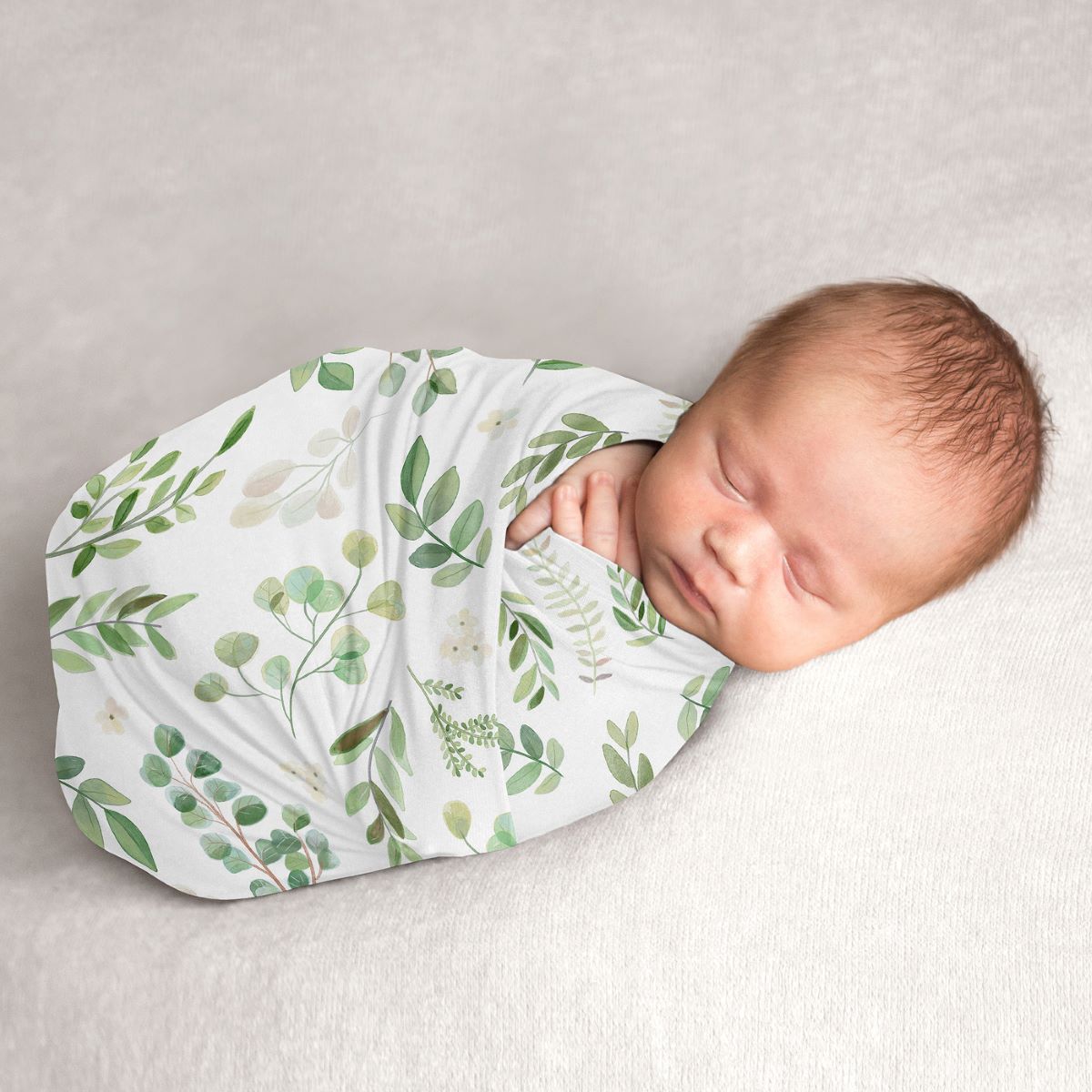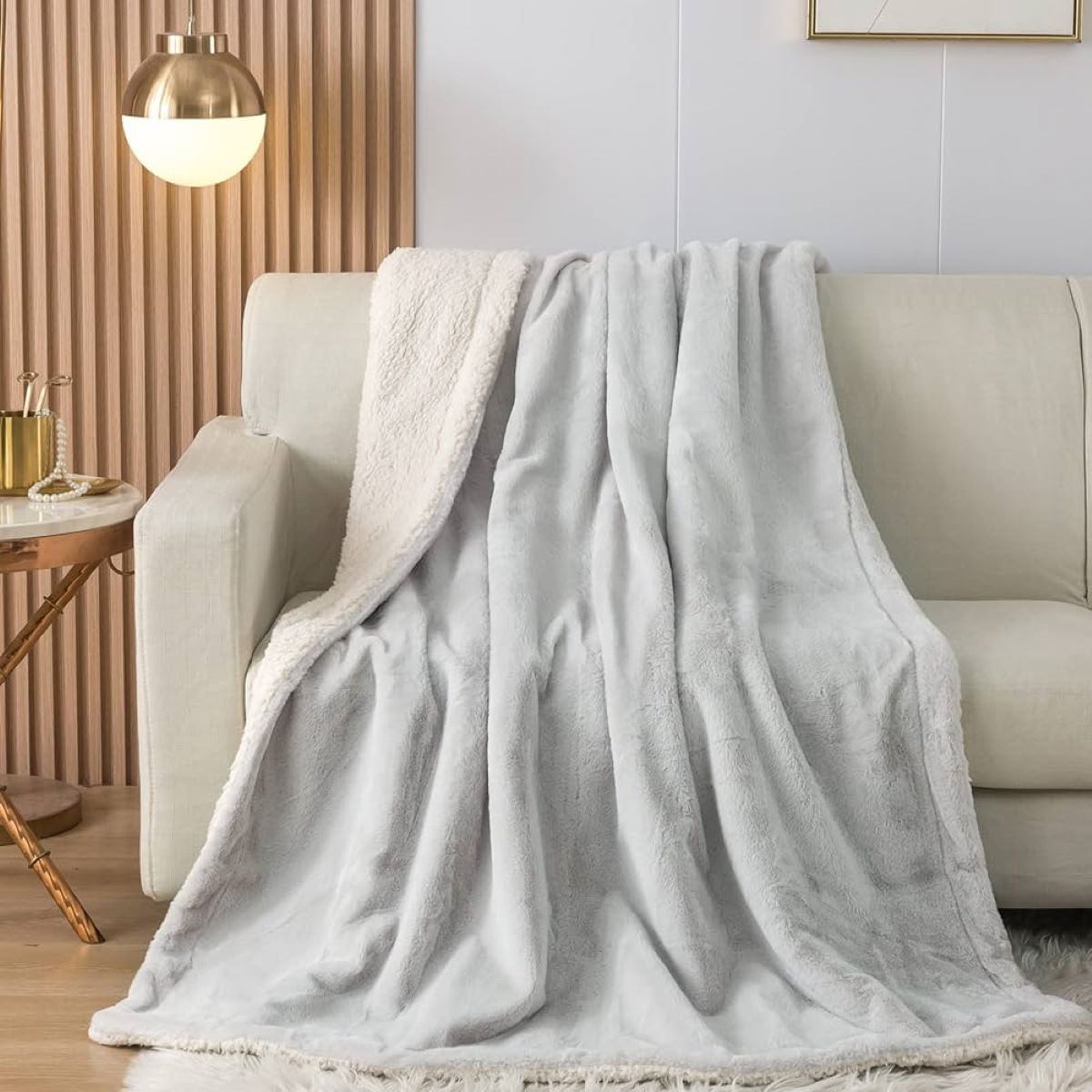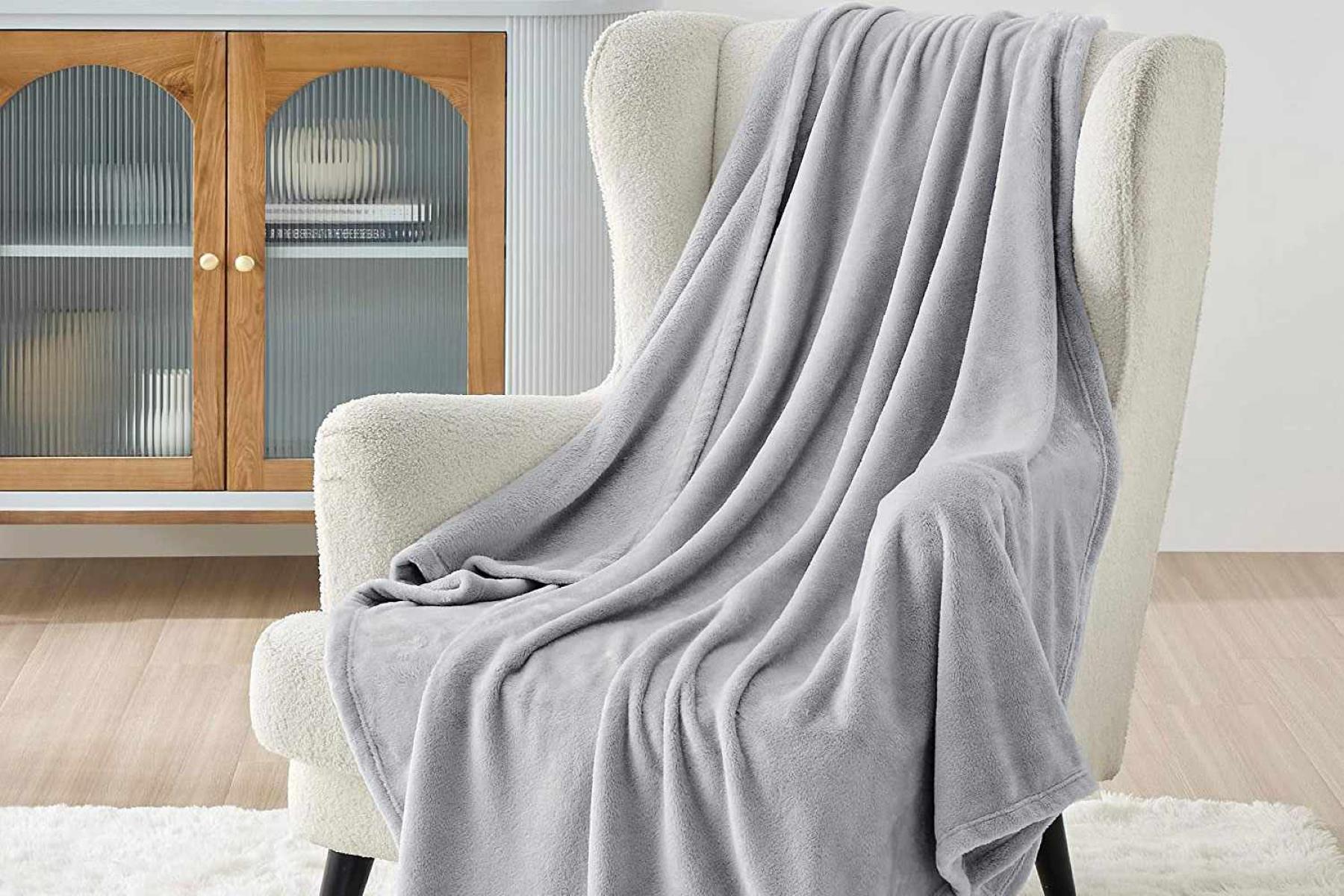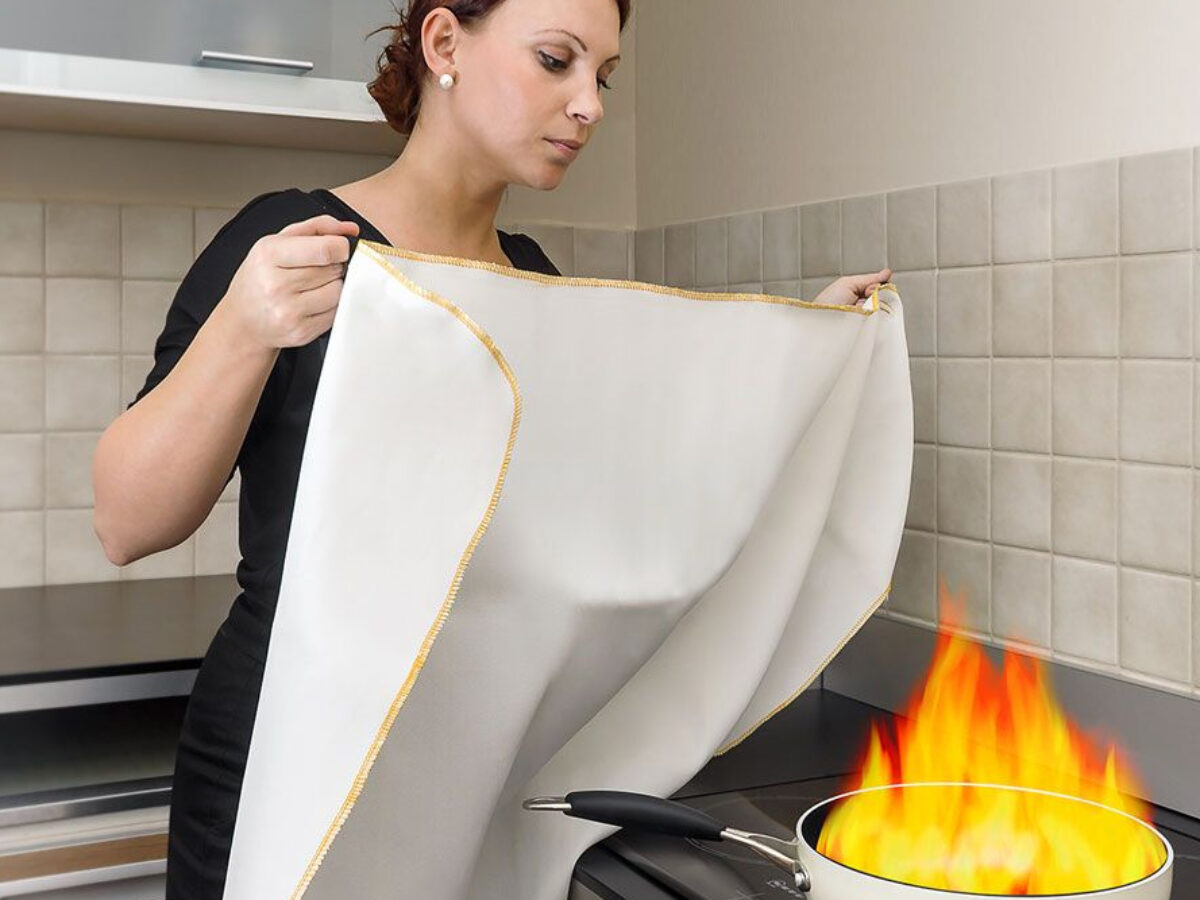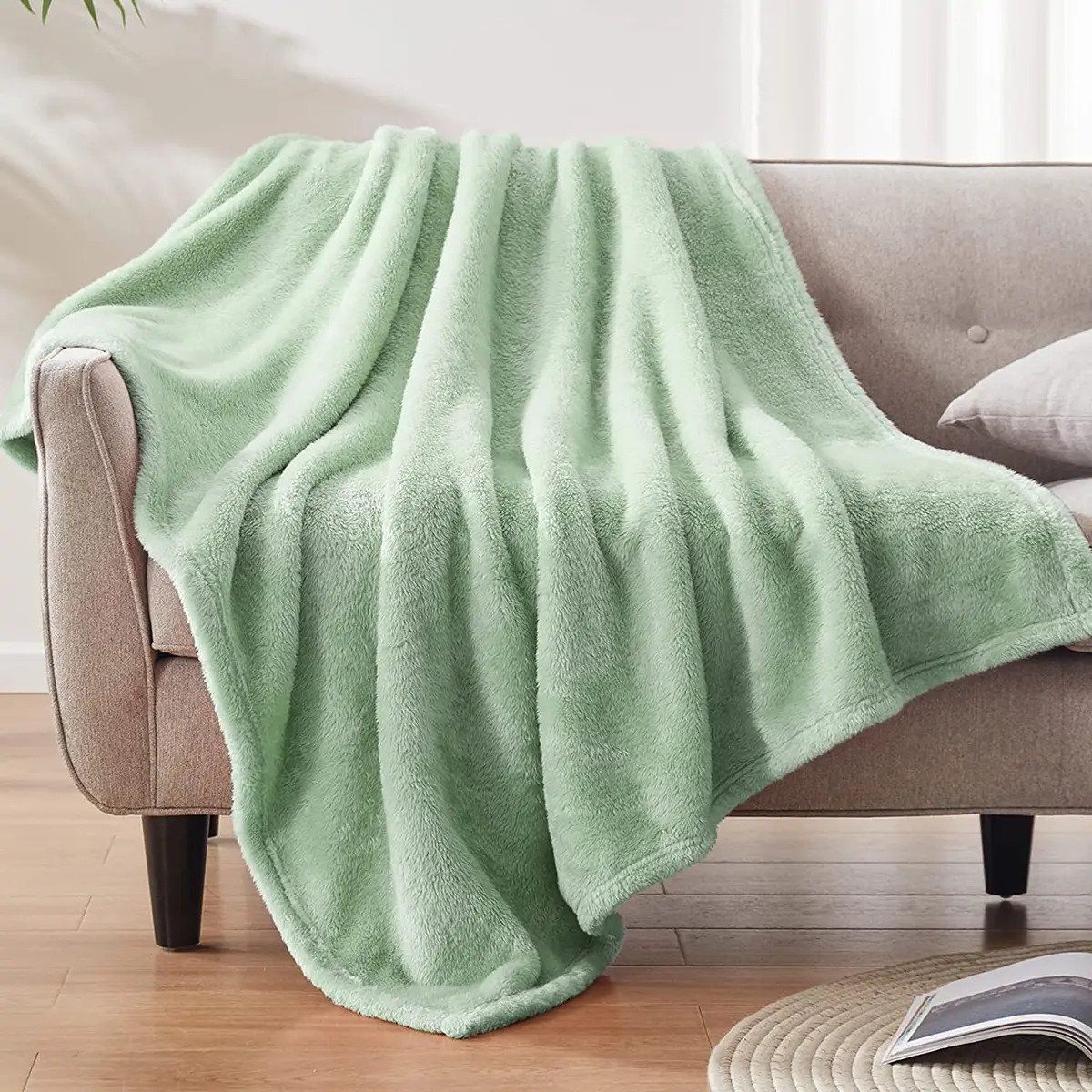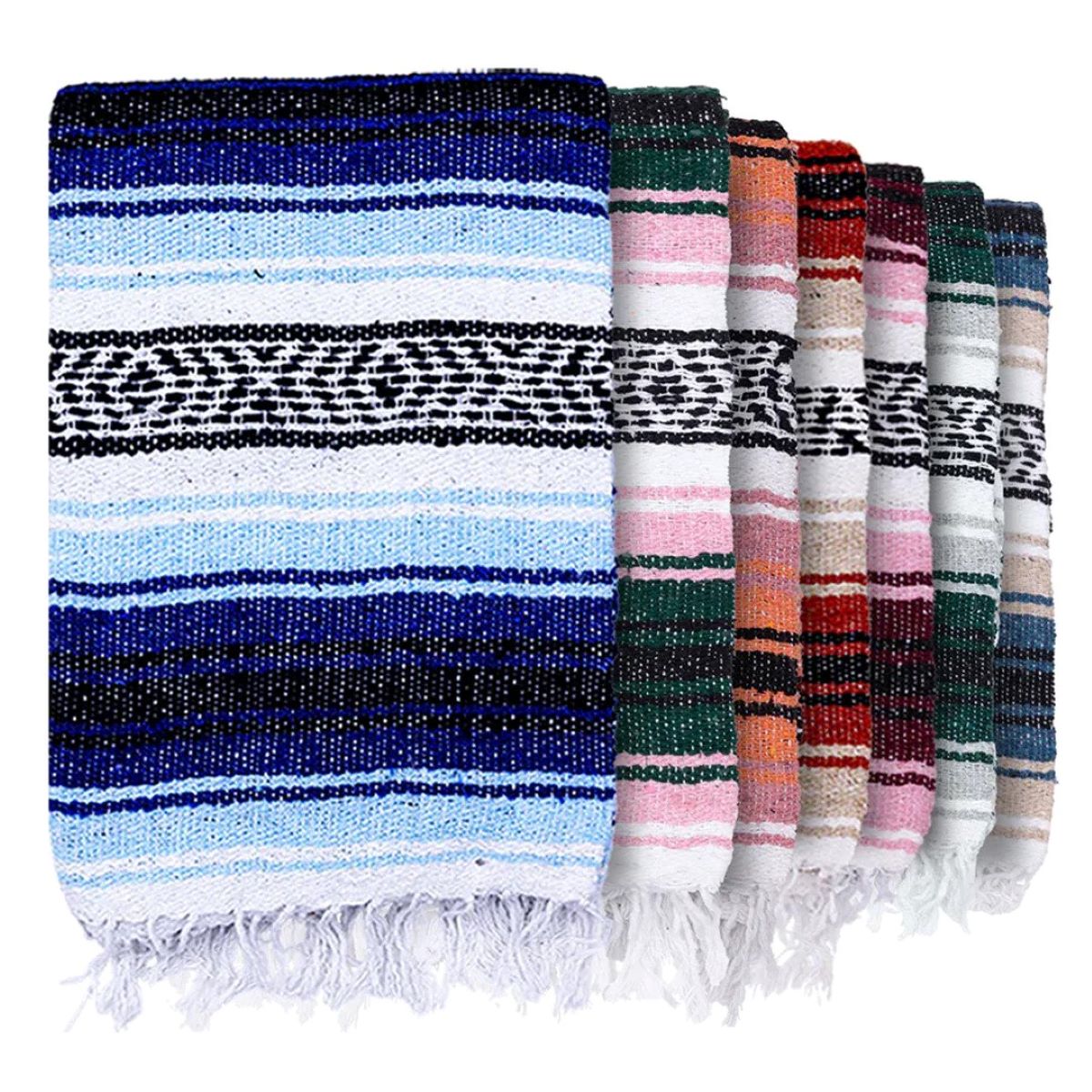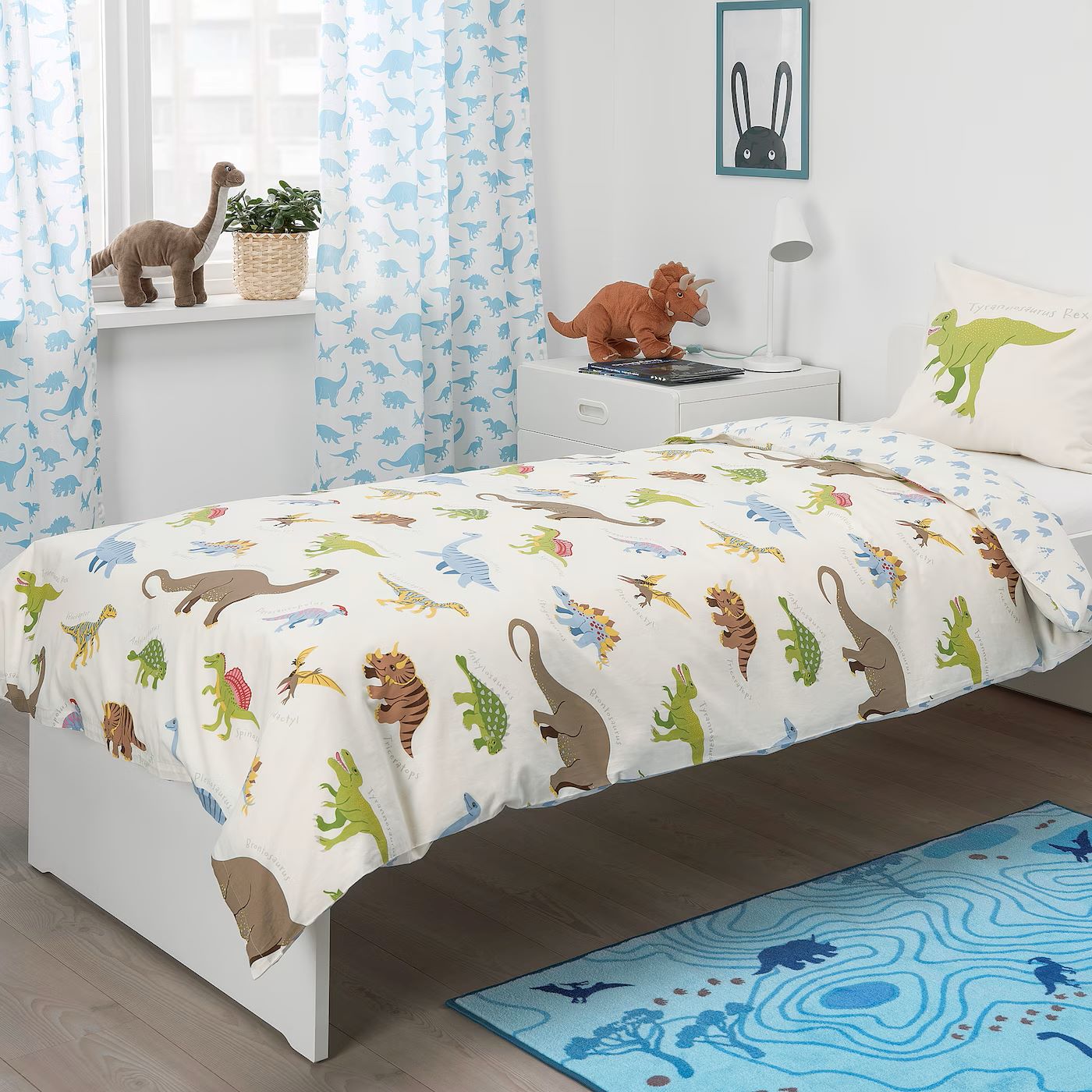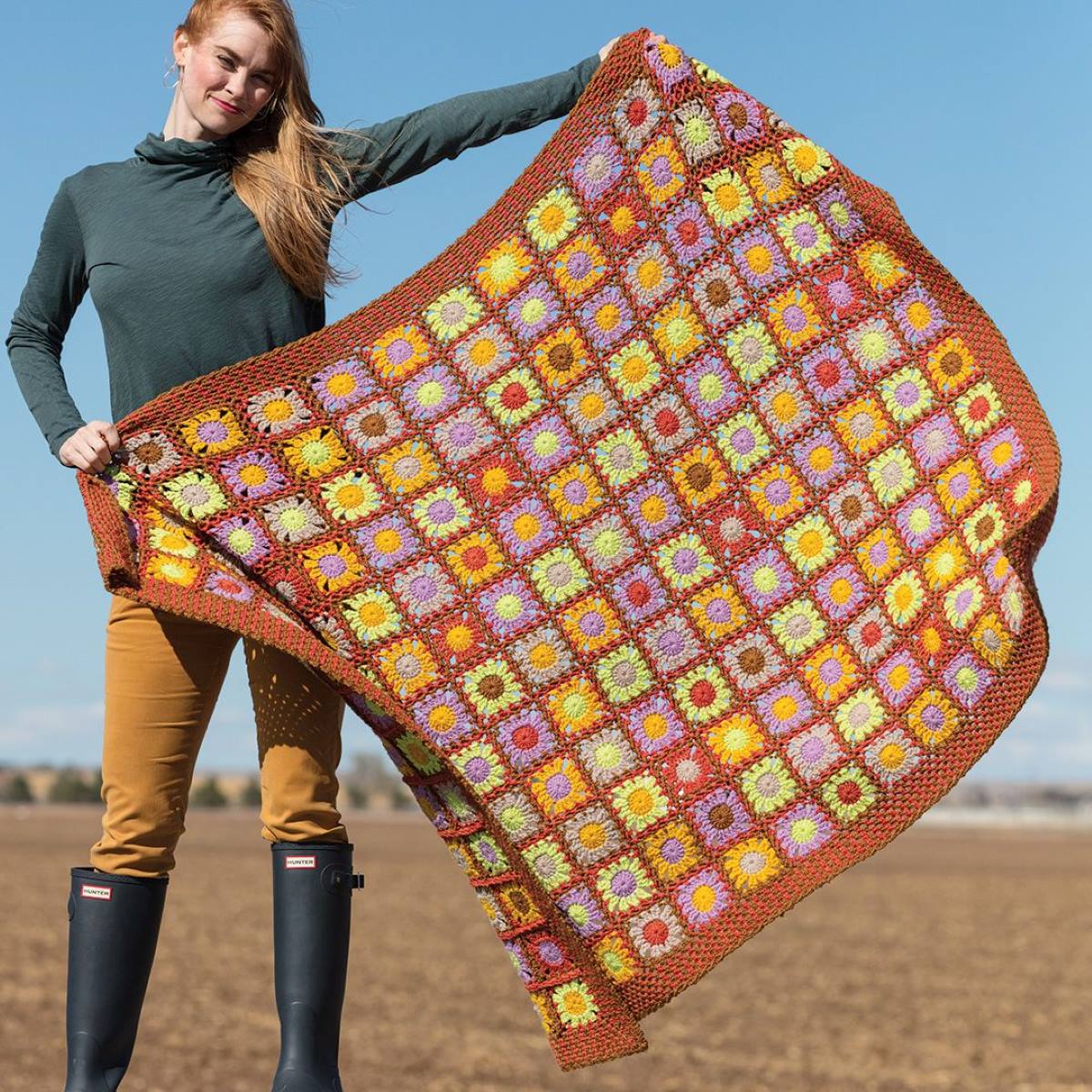

Articles
What Is An Afghan Blanket
Modified: May 6, 2024
Discover the history and beauty of Afghan blankets in our articles. Uncover the secrets behind these timeless treasures and find inspiration for your own creations.
(Many of the links in this article redirect to a specific reviewed product. Your purchase of these products through affiliate links helps to generate commission for Storables.com, at no extra cost. Learn more)
Introduction
An Afghan blanket is a type of decorative throw that originated in Afghanistan. It is known for its unique and intricate designs, as well as its warmth and durability. The art of creating Afghan blankets has been passed down through generations, and they hold a special significance in Afghan culture.
The origins of Afghan blankets can be traced back hundreds of years, and they have evolved over time to become an iconic symbol of Afghan craftsmanship. These blankets were traditionally handmade by skilled artisans using a variety of techniques, including crochet, knitting, and embroidery.
Afghan blankets are prized for their versatility and beauty. They can be used as a cozy blanket on a chilly evening, a decorative accent on a sofa or bed, or even as a wall hanging. Their vibrant colors and intricate patterns make them a popular choice for adding a touch of cultural charm to any space.
The materials used in the creation of Afghan blankets vary depending on the region and the artisan. Some blankets are made from sheep’s wool, which provides excellent insulation and durability. Others are made from softer yarns like acrylic or cotton, offering a lighter weight option.
Today, Afghan blankets are not only cherished in their country of origin but also celebrated worldwide for their craftsmanship and cultural significance. They have become coveted collectibles and are often passed down as family heirlooms.
In this article, we will delve deeper into the origins of Afghan blankets, explore the traditional designs that make them unique, discuss the materials used in their creation, and examine their cultural symbolism. We will also explore the modern uses of Afghan blankets, provide tips for their care and maintenance, and conclude with a reflection on their enduring legacy.
Key Takeaways:
- Afghan blankets are more than just decorative throws; they are symbols of Afghan craftsmanship, cultural heritage, and hospitality, cherished and celebrated worldwide for their beauty and significance.
- The intricate designs, vibrant colors, and durable materials of Afghan blankets make them versatile and meaningful, serving as functional blankets, fashion inspirations, and cherished family heirlooms.
Read more: How To Wash An Afghan Blanket
Origins of Afghan Blankets
Afghan blankets have a rich and storied history, dating back centuries. The craft of blanket-making has been an integral part of Afghan culture, passed down through generations as a cherished tradition.
It is believed that Afghan blankets first originated in the nomadic tribes of Afghanistan. These tribes would move from place to place, often in search of pasture for their livestock. As a result, they needed warm and durable blankets to protect against the harsh and unpredictable weather conditions.
The process of creating Afghan blankets was initially a practical necessity, born out of the need for warmth and protection. However, over time, these blankets evolved into elaborate works of art, showcasing the creativity and skill of the Afghan artisans.
Afghan blankets were traditionally made by hand, using various techniques such as crochet, knitting, or embroidery. Each region in Afghanistan developed its own unique style and patterns, resulting in a diverse range of designs.
The patterns and motifs used in Afghan blankets often have deep cultural and symbolic meanings. Some designs feature geometric patterns, representing the harmony and balance in nature. Others incorporate floral motifs, symbolizing beauty and growth. Still, others depict animals or human figures, reflecting the rich folklore and storytelling traditions of the Afghan people.
As Afghan blankets gained recognition for their quality and craftsmanship, they began to spread beyond the borders of Afghanistan. Traders traveling along the Silk Road introduced these blankets to other regions, where they were eagerly embraced for their beauty and functionality.
Today, Afghan blankets are not only an essential part of Afghan culture but also a treasured symbol of craftsmanship and heritage. Afghan artisans continue to produce these blankets using traditional techniques, keeping the ancient art alive.
In the next sections of this article, we will explore the intricate designs that make Afghan blankets unique, learn more about the materials used in their creation, and delve into their cultural significance as symbols of Afghan heritage.
Traditional Afghan Blanket Designs
The beauty of Afghan blankets lies in their intricate and distinctive designs. Each design carries its own cultural significance and serves as a representation of Afghan heritage.
One of the most iconic traditional Afghan blanket designs is the “diamonddesign”. These blankets are adorned with rows of diamond-shaped patterns, often in vibrant and contrasting colors. The diamonds may be interconnected or stand alone, creating a mesmerizing visual effect. This design is believed to symbolize protection and prosperity.
Another popular design is the “zigzag”pattern. This design features alternating zigzag lines that create a sense of movement and energy. It is thought to represent the ups and downs of life and the resilience of the Afghan people.
Floral motifs are also commonly found in Afghan blanket designs. These intricate patterns often showcase various types of flowers, such as roses, tulips, and poppies. Flowers hold deep cultural symbolism in Afghan society, representing beauty, growth, and connection to nature.
Some Afghan blankets feature geometric patterns, such as squares, triangles, and hexagons. These designs reflect the mathematical precision and balance in Afghan culture. They convey a sense of order and harmony, creating a visually pleasing aesthetic.
The use of colors in traditional Afghan blanket designs is also significant. Each color carries its own symbolism and meaning. For example, red is associated with passion and strength, while blue represents tranquility and stability. Green symbolizes nature and growth, and yellow signifies joy and optimism.
It is worth noting that the designs and patterns used in Afghan blankets can vary based on the specific region or tribe of the artisan. Some regions may have their own unique patterns and motifs, adding to the diverse array of Afghan blanket designs.
While traditional Afghan blanket designs have a rich history, contemporary designs have also emerged, influenced by modern trends and artistic expressions. Afghan artisans continue to innovate and experiment with new patterns and color combinations, blending the traditional with the modern.
Whether showcasing traditional or contemporary designs, Afghan blankets remain iconic symbols of Afghan craftsmanship and cultural heritage. They bring beauty and warmth to any space, while carrying with them the stories and traditions of generations past.
Materials Used in Afghan Blankets
Afghan blankets are known for their durability and warmth, thanks in large part to the materials used in their creation. The choice of materials depends on factors such as region, climate, and personal preference.
One of the most common materials used in Afghan blankets is sheep’s wool. Sheep are abundant in Afghanistan, and their wool is highly valued for its insulation properties. Wool Afghan blankets are thick, warm, and able to retain heat, making them ideal for colder climates or chilly nights. The natural oils present in wool also provide some resistance to stains and moisture, adding to the longevity of the blanket.
However, not all Afghan blankets are made from wool. In recent years, artisans have started using other materials to cater to different preferences and needs. Acrylic yarn is a popular alternative, especially for those who prefer a blanket that is lighter in weight and easier to care for. Acrylic blankets offer excellent color retention and are generally more affordable than wool blankets.
Cotton yarn is another material commonly used in Afghan blankets. Cotton is a breathable and soft fiber, making it suitable for individuals with wool allergies or those living in warmer climates. Cotton Afghan blankets are lighter and more suitable for use during mild or transitional seasons.
In addition to these main materials, Afghan blankets often incorporate other decorative elements to enhance their visual appeal. This may include the use of decorative threads, such as metallic or silk threads, to add a touch of luxury and shine to the blanket. Beads, sequins, or embroidery may also be incorporated to create intricate embellishments and textures.
It is important to note that the choice of materials may affect the overall care and maintenance of Afghan blankets. While wool blankets may require special handling, such as handwashing in cold water and drying flat, acrylic and cotton blankets are often machine washable and can withstand regular use.
Ultimately, the materials used in Afghan blankets contribute to their quality, durability, and overall comfort. Whether made from wool, acrylic, cotton, or a combination of materials, Afghan blankets provide warmth, beauty, and a connection to the rich heritage of Afghan craftsmanship.
When choosing an Afghan blanket, look for one made from high-quality materials such as wool or cotton for warmth and durability. Consider the size and design to ensure it fits your needs and style preferences.
Afghan Blankets as Cultural Symbols
Afghan blankets hold great cultural significance in Afghan society. They are not just functional items or decorative pieces but are deeply woven into the fabric of Afghan traditions and cultural identity.
First and foremost, Afghan blankets are a symbol of Afghan craftsmanship and skill. The art of creating these blankets has been passed down through generations, with artisans dedicating their time and expertise to perfecting their craft. Afghan blankets are a testament to the creativity, attention to detail, and dedication of Afghan artisans, making them highly valued cultural artifacts.
Furthermore, Afghan blankets serve as a reflection of Afghan history and heritage. Each intricate design and pattern tells a story, often rooted in Afghan folklore or historical events. Generations of Afghan artisans have preserved these traditional designs, ensuring that the cultural narratives and traditions associated with Afghan blankets continue to thrive.
Afghan blankets also have a significant role in Afghan hospitality and customs. In Afghan culture, it is customary to offer guests a warm blanket as a gesture of hospitality and comfort. Afghan blankets serve as a symbol of warmth, hospitality, and generosity, creating a welcoming and inclusive environment for guests.
As symbols of Afghan cultural identity, Afghan blankets are often cherished as family heirlooms. They are handed down through generations, serving as a connection to ancestral roots and a tangible reminder of family history. These blankets become part of family traditions, accompanying individuals throughout their lives and creating a sense of continuity and belonging.
Additionally, Afghan blankets hold cultural significance beyond Afghanistan’s borders. They are recognized and appreciated worldwide for their unique designs and exquisite craftsmanship. Afghan refugees or immigrants often carry Afghan blankets with them as a tangible piece of their heritage, providing comfort and a sense of home in their new surroundings.
Moreover, Afghan blankets have made their mark on the international fashion and decor industries. Their vibrant colors, intricate patterns, and cultural significance have inspired designers and decorators around the world. Whether used as a traditional blanket or repurposed as a decorative wall hanging or upholstery fabric, Afghan blankets bring a touch of Afghan culture and history to spaces beyond Afghanistan.
In summary, Afghan blankets are much more than just blankets. They embody the skill, creativity, and cultural heritage of the Afghan people. As symbols of craftsmanship, history, hospitality, and cultural identity, Afghan blankets continue to be cherished and celebrated not only within Afghanistan but also across the globe.
Read more: What Is A Snuggie Blanket
Popularity and Uses of Afghan Blankets Today
Afghan blankets have gained popularity worldwide for their exquisite craftsmanship, cultural significance, and versatility. They have found a place in modern homes, fashion, and even as collectible items. Let’s explore the various uses and the enduring popularity of Afghan blankets today.
One of the main uses of Afghan blankets today is as a cozy and stylish home accessory. Their vibrant colors and intricate designs make them an eye-catching addition to any room. Whether draped over a sofa, laid out on a bed, or used as a decorative wall hanging, Afghan blankets bring warmth and cultural charm to interior spaces.
Furthermore, Afghan blankets continue to be treasured as functional blankets. Their construction from high-quality materials, such as wool, acrylic, or cotton, ensures their warmth and durability. Whether snuggling up on a chilly evening, using them as picnic blankets, or taking them on outdoor adventures, Afghan blankets provide comfort and practicality.
Afghan blankets have also made their mark in the fashion industry. Designers have incorporated Afghan blanket motifs into clothing, such as scarves, shawls, and sweaters, creating unique and culturally inspired fashion statements. The vivid colors and intricate patterns of Afghan blankets add a touch of bohemian flair to various fashion styles.
As collectible items, Afghan blankets hold a special allure for enthusiasts and collectors. Vintage or antique Afghan blankets, with their unique designs and historical significance, are sought-after items that hold value beyond their function. Collectors appreciate the craftsmanship and cultural heritage embodied in these blankets.
Afghan blankets have also become popular gifts, whether as souvenirs from Afghanistan or as tokens of cultural appreciation. Many people appreciate the cultural significance and handmade nature of Afghan blankets, making them meaningful and cherished gifts for special occasions.
Furthermore, Afghan blankets have found purpose beyond being simply functional or decorative. They are often used as symbolic pieces to raise awareness or support social causes related to Afghanistan or the refugee community. Afghan blankets are sometimes auctioned or donated to charity events, with proceeds going towards initiatives that benefit Afghan communities.
In summary, Afghan blankets have gained popularity and continue to be cherished today for their beauty, craftsmanship, and cultural significance. Whether used as home decor, fashion accessories, functional blankets, collectible items, or as symbols of support, Afghan blankets play a versatile and meaningful role in our contemporary world.
Care and Maintenance of Afghan Blankets
To ensure the longevity and pristine condition of your Afghan blanket, proper care and maintenance are essential. Here are some tips to keep your Afghan blanket looking its best:
1. Read the care instructions: Check if the blanket comes with specific care instructions from the manufacturer. This will provide you with guidance on how to clean and maintain the blanket.
2. Handwashing: It is often recommended to handwash Afghan blankets to preserve their delicate craftsmanship. Fill a basin or sink with cold water and a mild detergent suitable for wool or delicate fabrics. Gently agitate the blanket in the water, being careful not to stretch or twist it. Rinse thoroughly with clean water.
3. Machine washing: Some Afghan blankets, particularly those made from acrylic or cotton, may be machine washable. However, always check the care instructions before washing. Use a delicate or wool cycle with cold water and a mild detergent. Place the blanket in a mesh laundry bag or pillowcase to protect it from snagging or tangling. Avoid using bleach or harsh chemicals that may damage the fibers.
4. Drying: It is best to air dry Afghan blankets to prevent shrinkage or damage. Lay the blanket flat on a clean, dry towel or a drying rack in a well-ventilated area. Avoid direct sunlight and heat sources that may cause fading or distortion. Periodically flip the blanket to ensure thorough drying.
5. Storage: When not in use, store your Afghan blanket in a cool, dry place to prevent moisture buildup. Avoid tightly folding or compressing the blanket, as this may create creases or wrinkles. If possible, store the blanket in a breathable fabric cover to protect it from dust and moths.
6. Spot cleaning: For small stains or spills, spot clean the affected area immediately using a mild detergent and a soft cloth or sponge. Blot the stain gently, taking care not to rub it vigorously, which may damage the fibers. Allow the area to air dry completely.
7. Professional cleaning: If your Afghan blanket requires more extensive cleaning or if you are unsure about the best method, consider taking it to a professional cleaner experienced in handling delicate textiles. They will have the expertise and specialized equipment to clean the blanket effectively.
8. Handle with care: When using or storing your Afghan blanket, handle it gently to avoid snagging or pulling the delicate fibers. Take precautions to protect the blanket from sharp objects or rough surfaces that may cause damage.
By following these care and maintenance tips, you can ensure that your Afghan blanket remains beautiful and cherished for years to come. Proper care allows you to continue enjoying the warmth, beauty, and cultural significance of this remarkable piece of Afghan craftsmanship.
Conclusion
Afghan blankets hold a special place in Afghan culture and have garnered international recognition for their beauty, craftsmanship, and cultural significance. From their origins as practical and functional blankets, they have evolved into cherished symbols of Afghan heritage that are celebrated and sought after around the world.
Throughout history, Afghan blankets have served as an expression of Afghan craftsmanship and skill. Passed down through generations, the intricate designs and patterns tell stories of folklore, history, and cultural traditions. The art of creating Afghan blankets represents the creativity and dedication of Afghan artisans, keeping ancient traditions alive.
Today, Afghan blankets are more than just blankets. They bring warmth, comfort, and cultural charm to homes as decorative pieces or functional accessories. Their vibrant colors, geometric patterns, and floral motifs add a touch of elegance and bohemian flair to any space.
Afghan blankets transcended their traditional uses and have become a source of inspiration in the fashion industry. Designers incorporate Afghan blanket motifs into clothing, scarves, and shawls, creating unique and culturally inspired fashion statements.
As family heirlooms, Afghan blankets hold a deep emotional connection. Passed down through generations, they serve as a tangible link to ancestral roots, preserving family traditions and creating a sense of belonging.
Furthermore, Afghan blankets have become symbols of Afghan hospitality, generosity, and cultural identity. These blankets epitomize the warmth and welcoming nature of Afghan traditions, offering comfort to guests and forging connections across borders.
As we appreciate the beauty and cultural significance of Afghan blankets, it is crucial to care for and maintain them properly. By following proper cleaning and storage practices, we can ensure that these blankets remain in excellent condition for years to come.
In conclusion, Afghan blankets are much more than mere blankets. They are a testament to Afghan craftsmanship, a reflection of Afghan history, a symbol of cultural identity, and a source of warmth and beauty. Afghan blankets continue to be cherished as an essential part of Afghan culture, while captivating the hearts of individuals around the globe.
Whether draped over a sofa, showcased on a wall, worn as a fashion accessory, or cherished as a family heirloom, Afghan blankets will forever hold their place as an iconic symbol of Afghan craftsmanship and cultural heritage.
If you've enjoyed unraveling the rich tapestry of Afghan blankets, why not try your hand at some festive creations? Our next feature offers a collection of stylish DIY crafts perfect for Easter. From homemade decorations to unique gifts, these projects are sure to add a personal touch to your celebrations. Spark your creativity and create memories that last beyond the season!
Frequently Asked Questions about What Is An Afghan Blanket
Was this page helpful?
At Storables.com, we guarantee accurate and reliable information. Our content, validated by Expert Board Contributors, is crafted following stringent Editorial Policies. We're committed to providing you with well-researched, expert-backed insights for all your informational needs.

